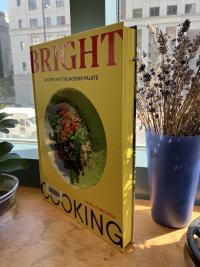Perhaps you've already noticed the spike in the number of recent book titles coming out in an edition with sprayed edges - such as the Rebecca Yarrow first edition Fourth Wing pictured here. Here's a very short history: colored edges, such as fore-edge painting and gilded edges, have existed for centuries. Back then, it was to know if someone tampered with the book via taking out pages (as is the case for marbled edged books, because the pattern would become wonky), or to seal the pages because de-acidification is a recent thing (started in the 1990s). Before paper was de-acidified, paper held its natural acid lignin, which would make the paper go brown at the edges. That would make the paper crumble and just generally be of terrible quality due to it being exposed to air and light. You can de-acidify a book but the process isn’t quick or easy.
But back to the matter at hand - these sprayed edge books (also known as "spredgers")! Many are very simple, featuring an accent color to draw the reader's eye to the title, such as the bright aqua edge on Stuart Turton's The Last Murder at the End of the World or the brooding purple on RuNyx's Gothikana. More detailed edge spraying gives readers a hint of what is going in the book - such as on the special edition of Five Broken Blades by Mai Corland.
Sprayed edge editions are not always available for libraries to acquire, being reserved for collectors and at a higher price, but a few titles with simple sprayed edges that you can find in DPL's collection are Can't Spell Treason Without Tea by Rebecca Thorne, Voyage of the Damned by Frances White, and Bright Cooking by Camille Becerra. Keep an eye on this trend; the possibilities are endless!

